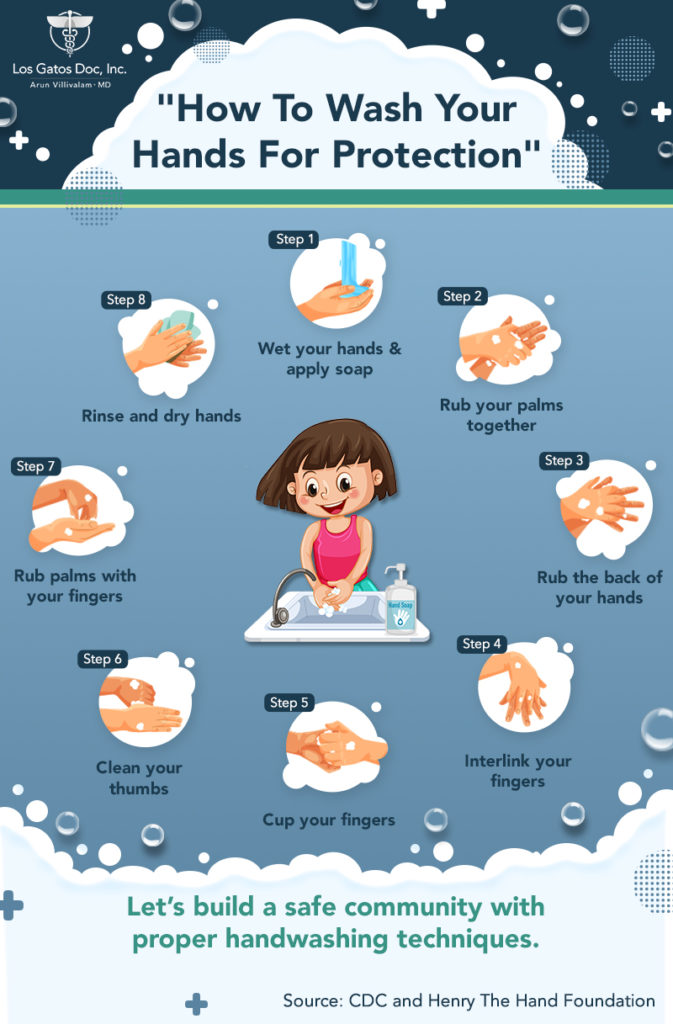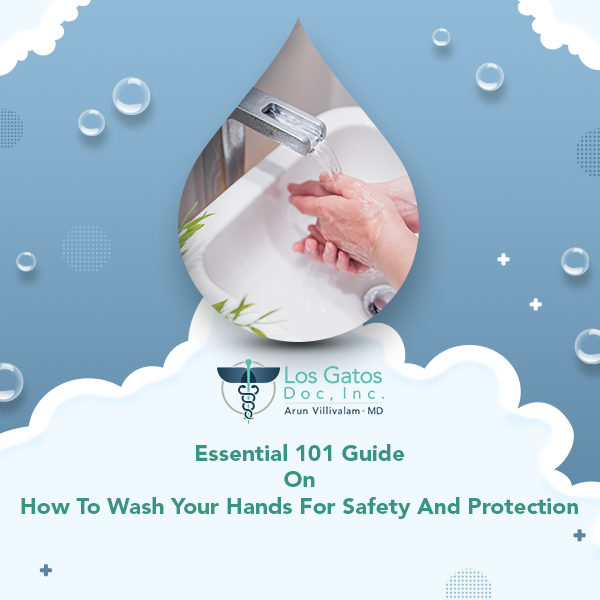The pandemic showed us how the basics, such as hand hygiene, may help in protecting us from the deadliest of illnesses.
Handwashing remains one of the cheapest, easiest, safest, and most effective health measures you can take to protect yourself and your family from a range of diseases.
Here’s an interesting backstory on handwashing:
From the United Nations water facts site, here’s an interesting backstory on handwashing:
“Until about 170 years ago, people thought miasma or polluted air caused infections. In the mid 19th century, a physician named Ignaz Semmelweis discovered how microbial infection works and how handwashing with soap and water effectively reduces the spread of infectious diseases.”
Why Handwashing Is A Lifesaver
Your hands are the germ carriers for transmitting infectious diseases like influenza, diarrhea, salmonella, food poisoning, and COVID-19.
When you touch your face with infected hands, viruses can enter your body through the mucous membranes in your eyes, nose, and mouth.
According to the Association for Professionals in Infection Control and Epidemiology (APIC), people touch their faces at least 23 times every hour.
Hand hygiene is an important preventive step you can take to avoid the transmission of deadly infections, which may lead to serious health complications.
Handwashing with soap and water is vital for preventing the spread of harmful germs and the sustainable development of our communities.
When To Wash Your Hands
You should wash your hands with soap and water thoroughly:
- When they are dirty
- After using the toilet
- After changing diapers
- Before touching your face
- Before and after shaking other people’s hands
- Before and after touching common surfaces and objects
- Before, during, and after cooking
- Before and after eating or drinking
- When handling raw, cooked, or ready-to-eat food
- After sneezing, blowing your nose, or coughing
- After using a tissue or handkerchief
- Before and after treating wounds and cuts
- Before and after attending to sick people
- After handling garbage
- After handling animals
- After coming back home from a public place or transportation
Sneeze or cough into a tissue to sneeze or cough whenever you feel the urge. Dispose of the tissue immediately and wash your hands.
Sneeze or cough into your elbow to reduce the chances of germ transmission if you don’t have a tissue or handkerchief.
How To Wash Your Hands Properly
A quick scrub or a rinse will not be enough to cleanse your hands of infectious germs.
Below is a step-by-step guide for effective handwashing.

Step 1: Wet hands with running water, warm or cold, and apply enough soap to cover your hands.
Step 2: Rub your palms together.
Step 3: Scrub the back of your hands.
Step 4: Interlink your fingers and scrub between your fingers.
Step 5: Cup your hands and clean under your nails.
Step 6: Rub and clean your thumb with the other hand. Do the same with your other thumb to clean thoroughly.
Step 7: Give a final scrub on your palms and fingers.
Step 8: Rinse thoroughly with running water.
Dry your hands with a clean towel or air-dry them, as keeping your hands moist can be a source of future contamination. Let every family member have their own towel and wash it frequently.
After washing and drying your hands, apply a moisturizing cream.
You can teach the above handwashing steps to your children by showing them how it’s done until they’ve perfected it. Younger children will need your assistance in washing their hands thoroughly.
As per the Centers for Disease Control (CDC) handwashing guidelines, it’s best to wash your hands with soap and water to reduce the germs and chemicals on your hands. But if you do not have access to soap and water, use a hand sanitizer that contains at least 60% alcohol. Sanitizers with lower alcohol levels are not as effective in killing harmful germs.
Washing your hands with soap and water is more effective than hand sanitizers. While alcohol-based hand sanitizers can kill certain kinds of germs, they cannot kill all germs like norovirus, and rotavirus. They cannot remove pesticides and heavy metals. They may not work if you use them on too dirty and greasy hands.
While children can use alcohol-based sanitizers, you need to take certain precautions. Keep sanitizers out of reach of young children and supervise them when using them as they can be harmful when swallowed.
Top Tips On Effective Handwashing
Use running water to wash your hands instead of a bowl of standing water to reduce the chances of contamination.
Avoid using hot water as it can damage your skin’s natural oils and cause dermatitis.
Both warm and cold water are equally effective in washing your hands.
Soap is essential to wash your hands as plain water will not remove the harmful germs and prevent infectious diseases.
According to the U.S. Food and Drug Administration (FDA), antibacterial soap is no better than regular soap as there are no additional benefits. Handwashing is recommended for not just killing harmful bacteria but also viruses. So, it doesn’t make sense to use an exclusive antibacterial soap when all soaps are, in fact, antibacterial. However, the FDA’s recommendation applies to only consumer antibacterial soap and not antibacterial soaps used in healthcare settings such as hospitals.
Whether you’re using hand soap or sanitizer, spend around 15-30 seconds cleaning your hands thoroughly. A quick hack is for your children to sing the “Happy Birthday” song twice while washing their hands.
Overwashing or washing your hands too frequently can dry your skin leading to red, flaky, cracked, and itchy skin. It strips your skin’s natural oils and the healthy bacteria needed to fight off the germs. Harmful germs can easily enter your body through your skin if it’s not maintained well. Always moisturize your hands after washing and drying them.
If you have sensitive skin, look for a mild, fragrance-free soap with a pH level suitable for your skin type and doesn’t cause irritation. Consult doctors in Los Gatos if skin irritation persists.
Conclusion
Handwashing is a simple, and effective way to fight off infections and protect yourself and your loved ones from illness.
Remember that handwashing can save lives.
Disclaimer: We routinely draw upon public health resources to inform our write-ups. Information in this article may be drawn up from multiple public health sources, including:
- Centers for Disease Control & Prevention
- Medline Plus
- National Institutes of Health
- American Medical Association
- American Association of Family Physicians
- Mayo Clinic
- Family Doctor






